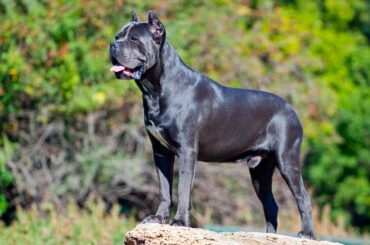A flock guardian dog, the Kuvasz dog is a historic Hungarian breed. The breed has been described in historical Hungarian writings. They have traditionally served as royal guard dogs or livestock guardians, but in the last seventy years, they have become more common as household pets. Hungary is where the contemporary Kuvasz was born. By maintaining them as his devoted bodyguards, King Mathias I of Hungary helped to establish the breed. Kuvasz was also utilized for large game hunting during the period.
Numerous nomadic or semi-nomadic tribes moved into what is now Hungary during the Migration Period and later the Hungarian conquest of the Carpathian Basin. In 895 or 896 AD, the Principality of Hungary was established. Matthias Corvinus is said to have kept a considerable number of Kuvasz dogs at his court in the fifteenth century as security dogs, hunting dogs, and occasionally war dogs.
Almost all Kuvasz dogs in Hungary were killed by the conclusion of World War II. The dogs were deliberately pursued and murdered by German and Soviet soldiers because of their record for guarding their homes, while some German officers used to take Kuvasz dogs home with them. After the war, it was discovered that only thirty Kuvasz remained in Hungary. Kuvasz breeders have repopulated Hungary since then, thanks to numerous committed breeders. However, because of this near-extinction, the genetic pool available to breeders was extremely limited, and some breeders may have continued their projects using other breeds, such as the Great Pyrenees.

The first Hungarian breed standard was created in 1884. The first Kuvasz was registered in the United States in 1931. The Kuvasz Club of America (KCA) was founded in 1966 and was recognized by the American Kennel Club as the official breed club in 1993.
Table of Contents
Body characteristic
The Kuvasz is a large and muscular dog that is both solid and well-muscled, as well as exceptionally strong and endurance-oriented. The head is wedge-shaped, with a muzzle that is slightly shorter than half the length of the head and a little stop. The almond-shaped eyes are dark brown in color and slightly tilted. The Kuvasz is a huge and robust dog, standing 71–76 cm tall at the withers and weighing 48–62 kg; bitches stand 66–70 cm tall and weigh 37–50 kg.
White or ivory-white coat with thick, coarse undercoat and soft undercoat. The skin is slate-grey, with black on the tip of the snout, lips, and eye rims, and black or slate-grey on the paw pads.
Behavior
Kuvasz Dogs can be violent and are best used as livestock guarding dogs on the range rather than as home pets. They may have a tendency to stray until they understand their boundaries. Kuvasz was chosen for their guarding abilities and their ability to protect their home and family. While their current role is essentially flocking guardianship, if reared as part of the family, they will assume guardianship of your children and home.

They are gentle and protective if raised with children and other pets. Lack of human touch or excitement can lead to destructive behaviors such as excessive alarm barking and digging. They are fiercely protective of their family, especially their children, and are wary of strangers.
Training
Even though Kuvasz are so intelligent, protective, and robust, socializing and training them from an early age is very vital. In training, they require patience and toughness. They are not the best dogs for a new dog owner. These bright canines demand tough training and considerable socializing due to their inherent independence.
Socialization of dogs intended to be family members is critical, and it should begin when the dog is young and continue throughout their lives. If Kuvasz dog is to be a family pet, they should be exposed to other dogs and animals along with humans when they are young.
Caring
Kuvasz dog requires a lot of exercises, but this requirement decreases as they get older. Kuvasz is naturally fit and athletic. Once they are physically grown, they require exercises such as long walks or runs. They can become destructive or aggressive if left alone for long periods of time. Grooming can be done as infrequently as once a week or as frequently as once a day during shedding periods.

Because the white coat is coarse, mud and filth are easily brushed off, revealing a clean white dog underneath. Kuvasz dogs can survive in temperate to cold temperatures with to their thick coats, as long as they have shelter, water, and food. During the spring and fall, Kuvaszok shed excessively, necessitating more frequent brushing.
Health
Kuvasz dog is typically healthy, however, they are susceptible to some health issues, as are all breeds. Kuvasz may be affected by the following factors:
- Hip dysplasia in dogs
- Osteochondritis Dissecans
- Von Willebrand Disease
- Dilatation-volvulus of the stomach
- A Kuvasz’s lifespan might be as brief as eight to ten years. People have lived for up to 14 years.
RECOMMENDED ARTICLES
- Komondor Dog- Characteristics, Behaviour, Caring, And Health
- 11 Comprehensive Causes of Dog Fever, Symptoms, Diagnosis, And Treatment
- Great Pyrenees Dog – Characteristics, 3 Comprehensive Behaviour, And Health
- 10 Best Natural Dog Food For Healthy Living And Nutrients
- Constipation in Dogs – 15 Exclusive Causes, Symptoms, And Treatment
If you like, share it. Sharing is usually caring




